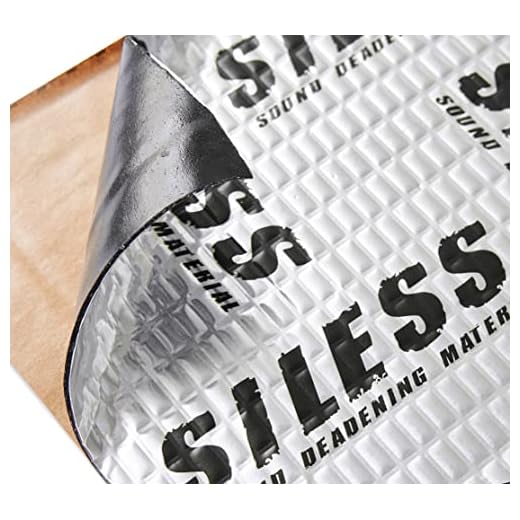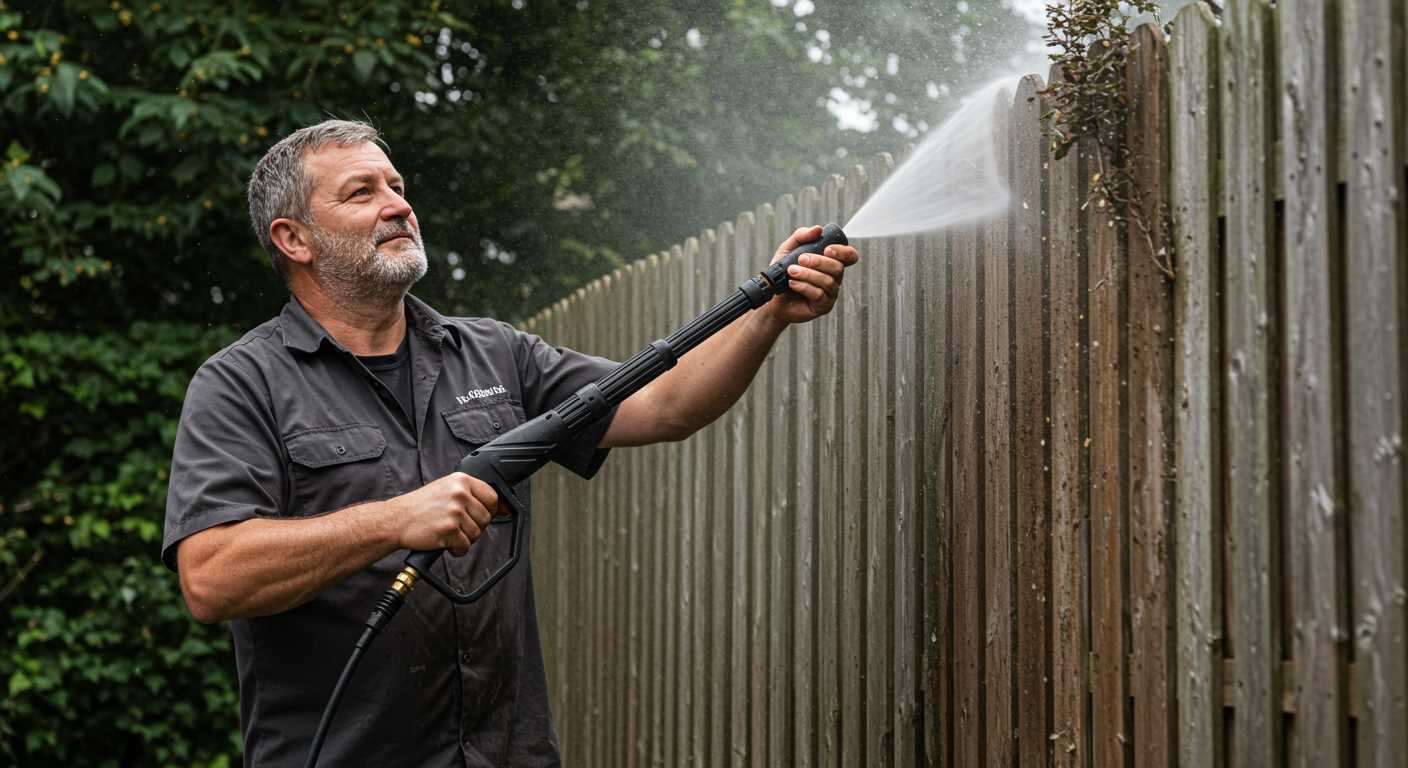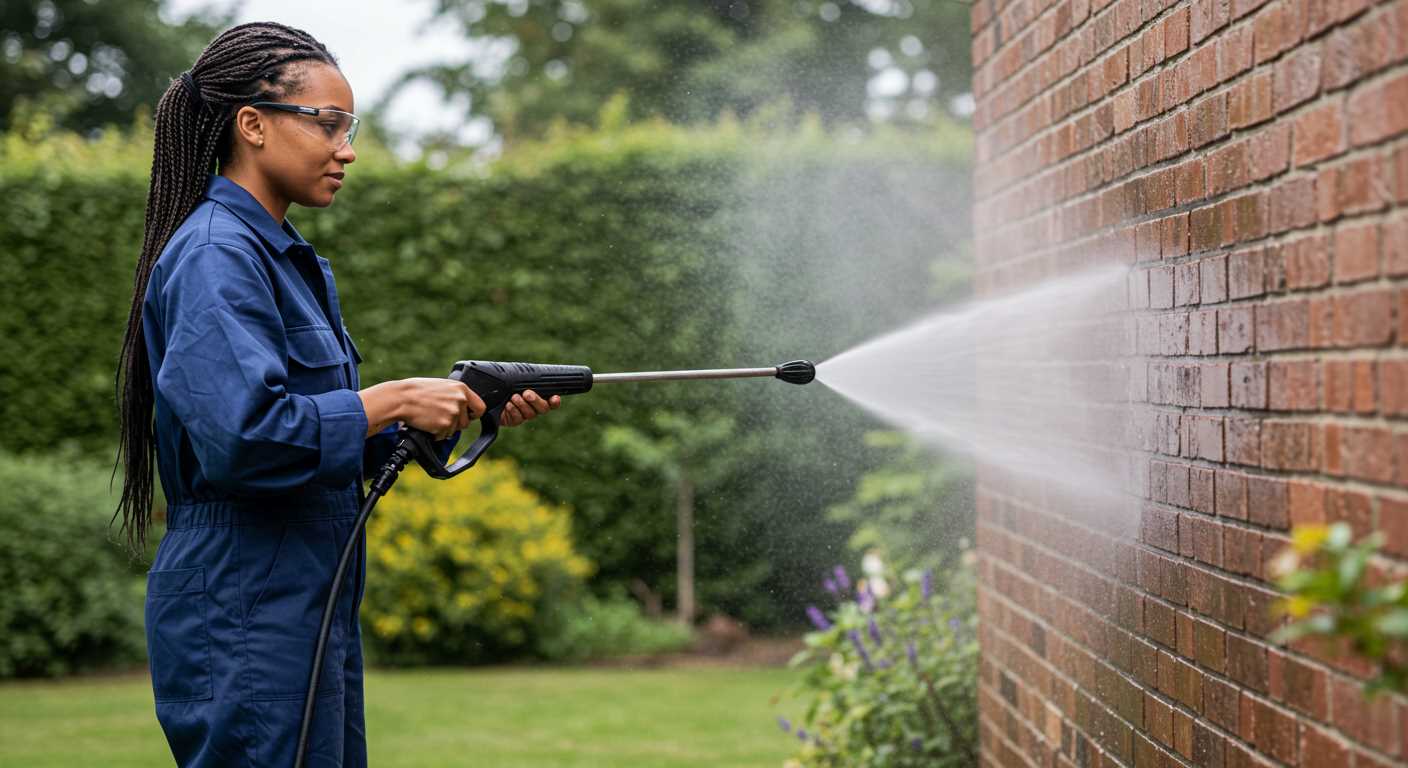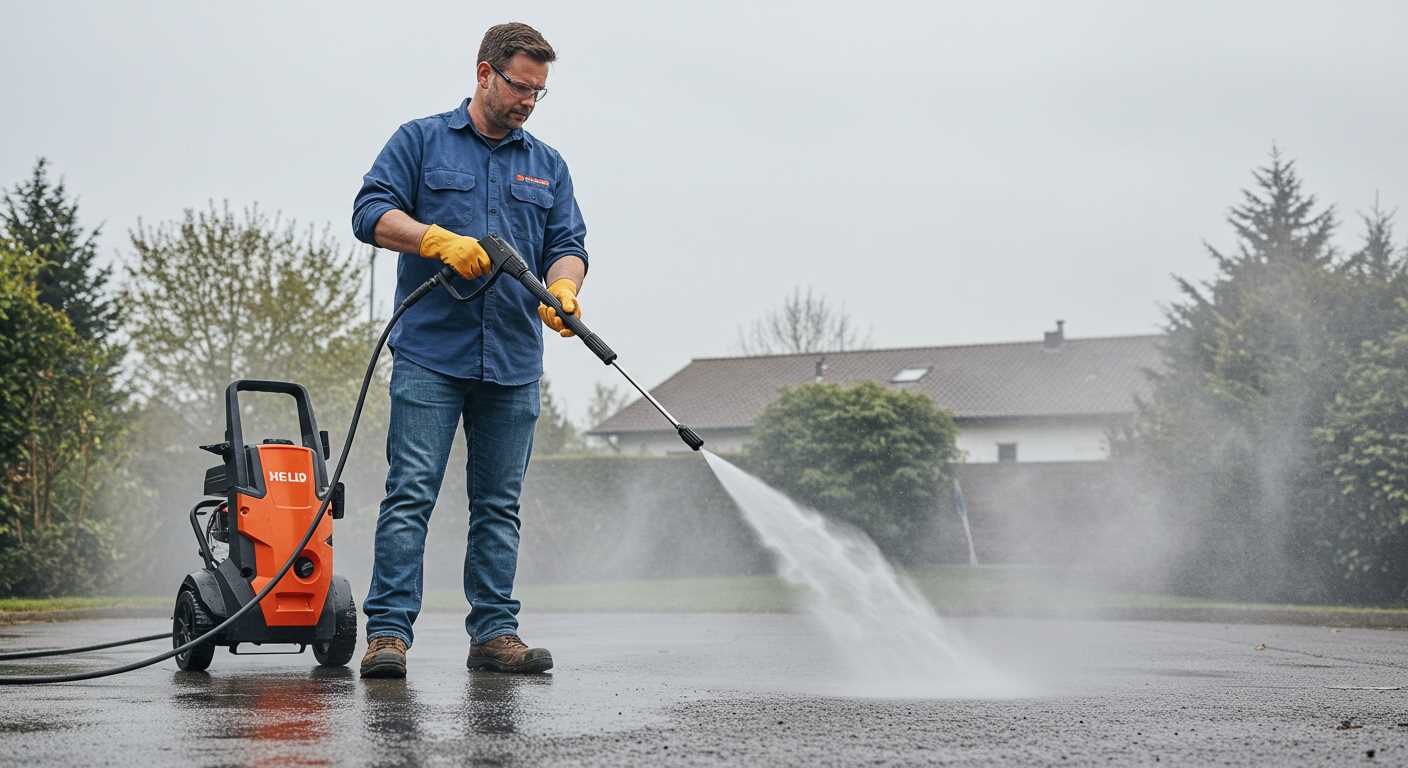



Excessive noise from your cleaning device often stems from several key factors. First, consider the type of motor. Electric models typically operate more quietly than their gas counterparts due to differences in design and power output. If your model operates on gas and you’re experiencing loud operation, this is a common characteristic; these machines are designed for higher pressure and can be inherently noisier.
Next, check for loose components. Vibration caused by unsecured parts can amplify sound levels significantly. Inspect hoses, fittings, and mounts to ensure everything is tightly in place. A secure assembly can lead to a noticeable reduction in noise during operation.
Also, pay attention to the quality of the device. Lower-end models may lack adequate sound insulation, resulting in greater noise during use. Investing in a higher-quality unit often comes with better build quality and noise reduction features, which can enhance your overall experience.
Finally, maintenance plays an essential role. Regular upkeep like replacing worn-out mufflers or engines can greatly influence sound output. If your unit hasn’t been serviced in a while, consider taking the time to address any maintenance needs. A little attention can go a long way in minimising excessive noise.
Common causes of high noise levels in pressure washers
Examine your equipment for issues that may contribute to elevated sound output. One frequent factor is the quality of the pump. A damaged or worn pump can create abnormal vibrations and excessive noise. Regular maintenance, including oil changes and inspection of seals, can mitigate this.
Check the motor and its components. An electric motor with faulty bearings or excessive friction can significantly increase noise. Lubricating the bearings and ensuring they are not damaged can enhance performance and reduce sound levels.
Consider the surface the unit operates on. If it’s placed on an uneven or hard surface, vibrations may amplify noise. Using rubber mats or vibration dampeners can help in minimising sound transmission.
Nozzle selection plays a role as well. A smaller or worn nozzle can increase pressure and sound levels. Ensure you are using the correct nozzles as per the manufacturer’s instructions. Replacing worn ones with new nozzles designed for your model can decrease excessive noise.
Inspect for any loose parts. Loose screws, fittings, or covers can rattle during operation and create unnecessary noise. Regularly tightening all accessible components can lead to a quieter experience.
Lastly, the type of fuel used in gas-powered varieties can affect sound. Low-quality fuel can result in irregular combustion, leading to louder operation. Always select high-quality fuel to ensure smoother engine function and lower sound output.
| Cause | Solution |
|---|---|
| Damaged pump | Regular maintenance and oil changes |
| Faulty motor bearings | Lubricate bearings and check for damage |
| Uneven surface | Add rubber mats or vibration dampeners |
| Worn nozzles | Replace with new, manufacturer-recommended nozzles |
| Loose parts | Tighten all accessible components |
| Low-quality fuel | Use high-quality fuel for smoother operation |
Impact of Motor Type on Sound Output
Choosing an electric over a gas engine can significantly reduce noise levels. Electric models typically operate at lower decibels due to their design and lack of combustion mechanisms, making them more suitable for residential use.
Gas engines, while often more powerful, have higher sound outputs. The forceful combustion processes generate noise that can be distracting and uncomfortable. Selecting units with well-designed mufflers can mitigate some of this sound but may not eliminate it entirely.
The RPM (revolutions per minute) of the motor also plays a pivotal role. Motors that run at lower RPMs generally produce less noise. In contrast, high-revving models often create a more significant auditory impact, which can be overwhelming during extended operations.
Additionally, consider brushless motors. These are often quieter and more efficient than traditional brushed variants. They also heat less, leading to reduced wear and longer life expectancy, further enhancing usability without excessive noise.
Lastly, understanding outlet configurations and operating conditions can influence sound levels. Ensuring the correct setup can optimise performance while minimising disturbances, making the experience more pleasant.
How maintenance affects the noise your pressure washer makes

Regular upkeep significantly reduces sound levels during operation. A clean filter ensures optimal airflow, preventing the motor from working harder than necessary, which can lead to increased noise.
Lubricating moving parts is vital; dry components create friction, which contributes to unwanted sound. Inspections for wear and tear on hoses and connections prevent leaks that can amplify noise levels.
Replacing worn seals and gaskets mitigates vibrations, ensuring a smoother operation. Checking fuel and oil levels regularly helps avoid mechanical strain on the engine, a common source of excessive volume.
Exhaust systems should also be inspected; damaged parts can lead to louder emissions. Using high-quality fuel and oil can improve engine performance, further reducing noise output.
Storing the equipment properly can prevent damage and deterioration that would otherwise lead to increased sound levels during use. Following a detailed maintenance schedule is key to achieving not only lower noise emissions but also prolonged lifespan and efficiency of the unit.
The role of nozzle size in sound generation

The nozzle size directly influences the noise produced during operation. A narrower nozzle creates higher pressure and accelerates the water flow, leading to an increase in sound levels. Conversely, a wider nozzle reduces pressure and flow speed, resulting in a quieter experience.
Selecting the correct nozzle for your tasks is key. For lighter cleaning jobs, such as washing cars or patios, I recommend using a wider nozzle to minimise noise while still achieving effective cleaning. On the other hand, for heavy-duty tasks like removing stubborn stains, the narrower nozzle is necessary, albeit at the cost of increased decibel levels.
Understanding the relationship between nozzle size and sound is vital for optimising both performance and user comfort. If noise reduction is a priority, experimenting with different nozzles can help you find the perfect balance between cleaning efficiency and sound output.
Always consider the manufacturer’s guidelines when changing nozzles, as using an incorrect size can also affect the machine’s performance and longevity. Monitoring the impact of your chosen nozzle on sound levels can lead to a more pleasant and effective cleaning experience.
Comparing electric and petrol pressure washers for noise

Electric units generally operate at lower sound levels than their petrol counterparts. This is due to the electric motors being inherently quieter. When evaluating options, I noticed that many electric models emit around 70-80 decibels, while petrol versions can easily exceed 90 decibels, creating a substantial distinction in noise output during use.
Another factor to consider is the design of the engine. Petrol machines often have larger engines that provide more power, which corresponds to increased noise generation. In contrast, electric models tend to have smaller motors, which can offer adequate cleaning performance without the excessive sound. For users sensitive to noise, selecting an electric model may result in a more pleasant working environment.
Operational conditions also play a role. Electric devices, when used in residential areas, are less disruptive. On the other hand, for robust tasks in outdoor settings or construction sites, petrol machines may be more appropriate despite their volume level. Users seeking mobility and independence from power sources may lean towards petrol devices, accepting the associated increase in noise levels as a trade-off for performance.
Ultimately, if sound output is a priority, opting for electric models is the wisest decision, especially for regular household use. However, for demanding applications requiring high pressure and flow rates, the additional noise from petrol machines may be an acceptable compromise for enhanced efficiency and power.
Identifying problematic components contributing to noise
The first step in reducing excessive noise is checking for loose or damaged components within the machine. Loose screws or fittings can vibrate during operation, amplifying sound levels. I recommend conducting a thorough inspection to ensure all parts are securely fastened.
Next, examine the pump assembly. Worn or damaged pumps can produce a grinding noise that is hard to ignore. If you can hear unusual sounds while using the machine, consider the possibility of internal wear. A replacement may be necessary for excessive wear cases.
Another area to inspect is the motor. If the motor isn’t functioning properly, it may generate more noise than usual. Listen for any high-pitched whining or rattling sounds, which can indicate motor failure or that it has become unbalanced. Replacing brushes or seeking professional help might be advisable in such cases.
Check the exhaust system if your machine uses a combustion engine. A blocked exhaust can lead to increased back pressure and excessive noise. Ensure that it is clear of debris and in good condition.
Additionally, consider the mounting of the unit itself. An improperly mounted or unstable machine can create vibrations that amplify sound. Placing the unit on a solid, flat surface may help mitigate this issue.
Lastly, review accessories, particularly the nozzle. Using worn or incorrect nozzles can also contribute to increased sound output. Regularly assess the condition of your nozzles and ensure you are using the correct type for your tasks.
- Check for loose screws or fittings.
- Inspect the pump for wear or damage.
- Listen for motor noises indicating internal issues.
- Ensure the exhaust system is clear.
- Securely mount the unit on a flat surface.
- Examine accessories, particularly the nozzle type.
Noise Reduction Tips for Your Equipment
Consider investing in a sound-dampening enclosure. This structure can significantly minimise external noise while keeping cooling and ventilation in mind.
Regular Maintenance

Keep the components well-lubricated. Friction between parts generates excess noise, so use the manufacturer-recommended oils or lubricants.
Inspect and replace worn or damaged parts promptly. A faulty or degraded engine can cause unwanted sound levels and degrade performance.
Nozzle Adjustments
Utilise nozzle sizes that align with your task requirements. Wrong sizes can alter the water flow and generate more noise. Experiment with different options to find an optimal balance.
Scheduled Use
Plan your cleaning tasks during hours when noise will be less disruptive, considering both local regulations and the comfort of neighbours.
Vibration Reduction
Utilise vibration dampeners or mats. Positioning these underneath your gear can absorb vibrations, lessening the overall ambient noise level.
- Connect hoses securely to avoid rattling.
- Ensure all screws and bolts are tightened to minimise movement during operation.
- Consider using soundproof barriers if operating in a noise-sensitive area.
By implementing these strategies, your cleaning sessions can become quieter, enhancing the experience for you and those around you.
When to Consult a Professional about Noise Issues
Consider reaching out to an expert if your machine emits sounds that are unusually high or distinctively different from standard operation. An assessment by a qualified technician can help pinpoint underlying issues such as serious mechanical failures, improperly aligned components, or worn-out parts.
Signs That Indicate Professional Help is Needed
If you notice vibrations that are excessive or hear clanging, grinding, or rattling noises, these are indicators of potential problems. Additionally, if maintenance efforts such as cleaning filters or replacing seals do not resolve the issue, it’s wise to seek a technician’s input. Ignoring such signs might lead to more significant repairs down the line.
Cost Considerations and Warranty Implications
Before assuming a DIY approach, evaluate the warranty terms of your device. Consulting a technician might be necessary to avoid voiding any existing warranties. Moreover, consider the cost of repair versus replacement; sometimes, it’s more economical to invest in a new model rather than spending on repairs that can escalate. A professional can provide guidance tailored to your specific situation.







